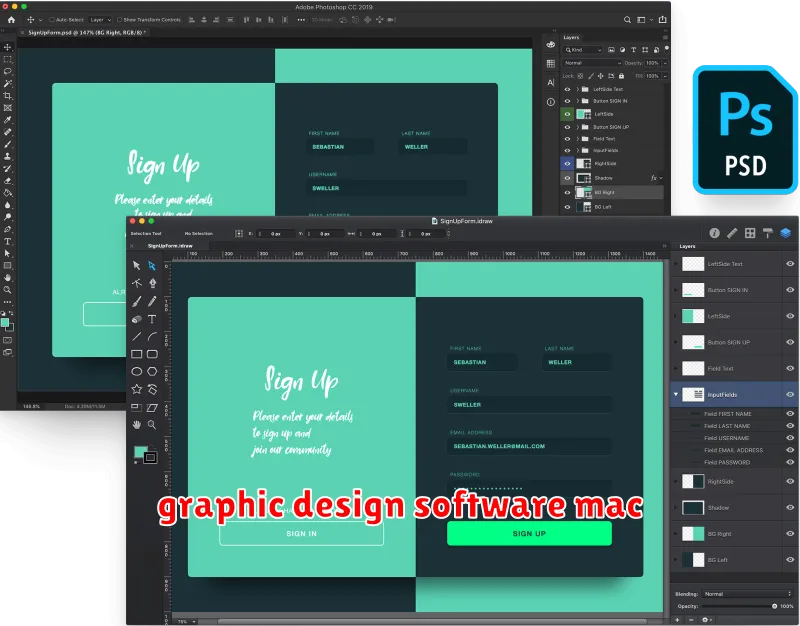Are you a graphic designer who wants to take your work to the next level? Then you need to check out the best macOS software available. The right software can make all the difference in creating stunning visuals and streamlining your workflow. From professional-grade vector editors to powerful photo editing tools, there’s a Mac app for every design need.
In this article, we’ll be diving into the 10 best macOS software for graphic designers. We’ll be exploring the top contenders, their features, and why they’re essential for any design professional. Whether you’re a seasoned veteran or just starting out, this guide will help you find the perfect tools to elevate your design game.
Adobe Photoshop
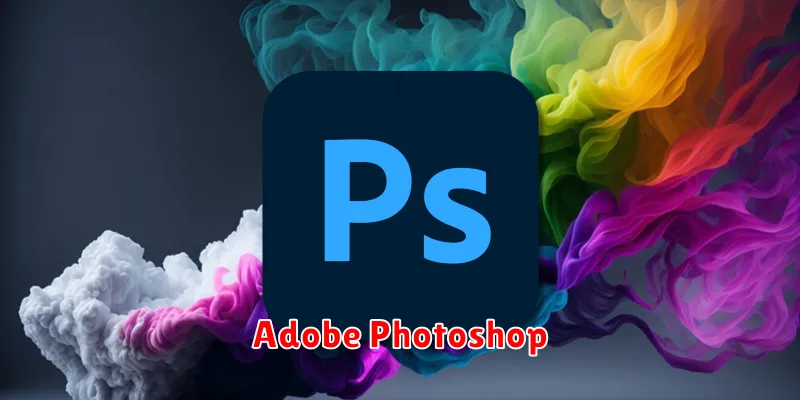
Adobe Photoshop is the industry standard for image editing and manipulation. It’s a powerful and versatile tool that can be used for everything from basic retouching to complex compositing and 3D design. With its extensive library of tools and features, Photoshop offers endless possibilities for graphic designers, photographers, and artists alike.
Some of the key features that make Photoshop a must-have for graphic designers include:
- Layer-based editing: Photoshop’s layer-based editing system allows you to work non-destructively, making it easy to make changes and experiment without affecting the original image.
- Extensive toolset: Photoshop offers a vast array of tools for selection, retouching, painting, and more. Whether you need to remove blemishes, create realistic textures, or design stunning graphics, Photoshop has the tools you need.
- Advanced filters and effects: Photoshop includes a wide range of filters and effects that can be used to enhance your images and create unique artistic styles.
- Support for multiple file formats: Photoshop supports a wide range of file formats, ensuring compatibility with other design software and applications.
- Excellent integration with other Adobe products: Photoshop seamlessly integrates with other Adobe products, such as Illustrator, InDesign, and After Effects, making it easy to create and share your designs across different platforms.
Photoshop is a powerful and indispensable tool for any graphic designer. Its extensive features, versatility, and industry-standard status make it a must-have for anyone serious about design.
Adobe Illustrator
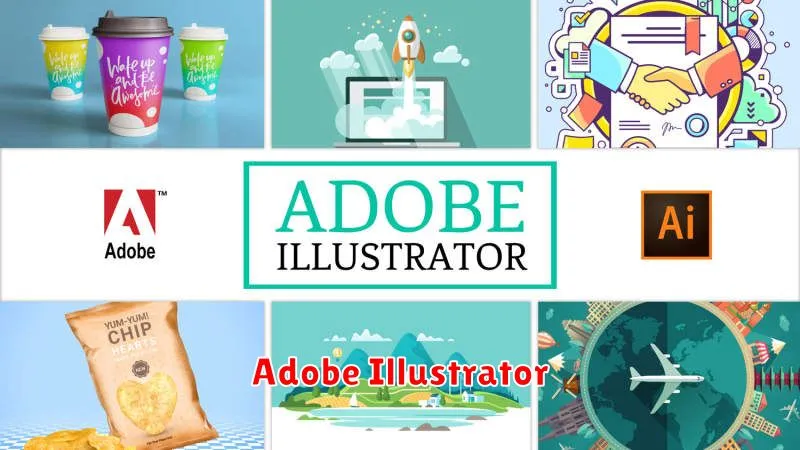
Adobe Illustrator is the industry-standard vector graphics editor for a reason. It’s incredibly versatile and powerful, allowing you to create everything from logos and icons to illustrations and complex artwork. Its robust features include:
- Precise drawing tools: Create perfect lines, shapes, and curves with ease.
- Advanced color management: Control color accuracy and consistency across your projects.
- Extensive library of tools and effects: Add depth and complexity to your designs.
- Seamless integration with other Adobe products: Work seamlessly with Photoshop, InDesign, and more.
- Industry-leading support and resources: Access tutorials, community forums, and expert help.
If you’re serious about graphic design, Adobe Illustrator is an essential tool. Its steep learning curve can be daunting, but the unmatched capabilities make it worth the investment.
Sketch
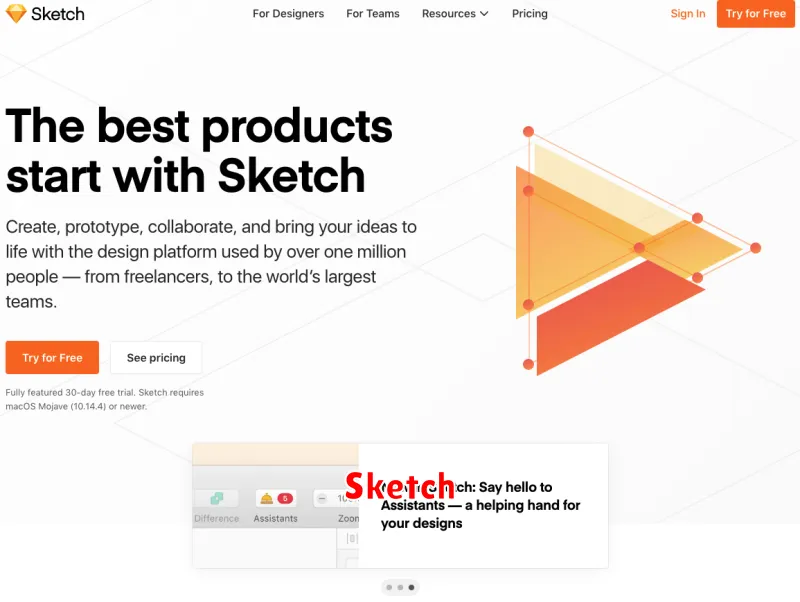
Sketch is a powerful and popular vector-based design tool specifically built for macOS. It has become a favorite among graphic designers and UI/UX professionals due to its streamlined interface, intuitive features, and focus on efficiency.
Sketch excels in creating beautiful user interfaces, websites, and icons. Its powerful layers and symbols system makes it easy to create complex designs and maintain consistency across different elements.
With its extensive plugin ecosystem, Sketch offers a wide range of customization options. From design prototyping and collaboration tools to advanced image manipulation features, you can easily tailor the software to your specific workflow needs.
Here are some key features of Sketch:
- Vector editing: Create precise shapes, lines, and illustrations with ease.
- Design prototyping: Quickly create interactive prototypes and test user flows.
- Symbols and libraries: Ensure design consistency across projects with reusable elements.
- Advanced text features: Control typography with precision and create stunning text layouts.
- Collaboration tools: Share your designs and work with others in real-time.
If you’re looking for a dedicated design tool that empowers you to create stunning visuals and streamline your design process, Sketch is definitely worth considering.
Affinity Designer
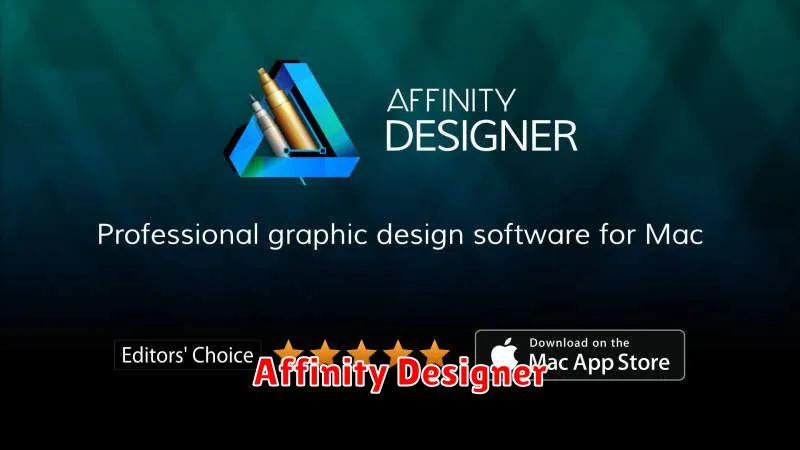
If you’re seeking a powerful and versatile vector graphics editor that’s a worthy alternative to Adobe Illustrator, look no further than Affinity Designer. This macOS software is renowned for its intuitive interface, blazing-fast performance, and exceptional feature set, making it a favorite among both seasoned professionals and aspiring graphic designers.
Key Features:
- Precise vector tools: Create stunning illustrations, logos, icons, and more with a comprehensive suite of vector tools, including bezier curves, pen tools, and shape builders.
- Non-destructive workflow: Work non-destructively, ensuring that your design elements remain editable and easily adjustable at any stage.
- Professional color management: Benefit from advanced color management tools that guarantee consistent color reproduction across different devices.
- Seamless file compatibility: Import and export files in various industry-standard formats, including AI, EPS, PDF, and SVG.
- Affordable pricing: Unlike Adobe Illustrator, Affinity Designer offers a one-time purchase, making it a budget-friendly option for individual designers and small studios.
Affinity Designer’s user-friendly interface makes it a great choice for both beginners and experts. Its robust capabilities empower you to tackle complex projects with ease, while its affordability makes it a compelling alternative to industry giants.
GIMP
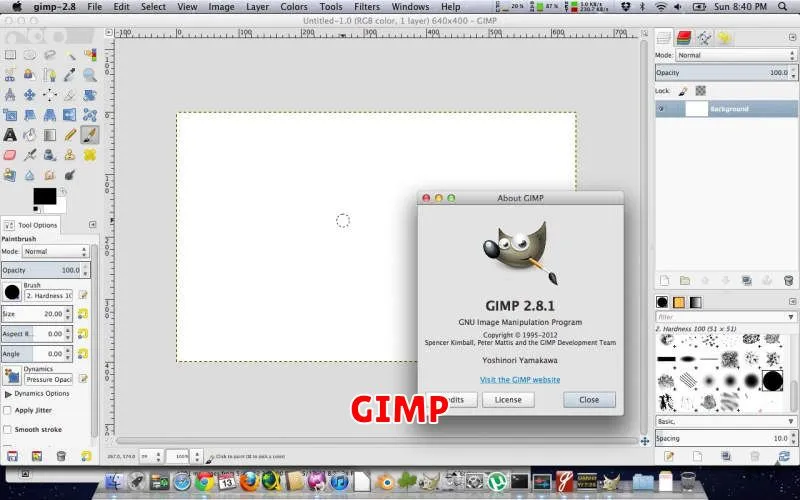
GIMP, short for GNU Image Manipulation Program, is a free and open-source image editor that rivals Adobe Photoshop in terms of its feature set. While it has a steeper learning curve than some other options on this list, GIMP offers a powerful suite of tools for image editing, manipulation, and creation.
GIMP’s capabilities include:
- Image editing: Crop, resize, rotate, and adjust brightness, contrast, and color balance.
- Layers and masks: Work with multiple layers and masks to create complex compositions and isolate elements.
- Painting and drawing: Use brushes, pencils, and other tools to create original artwork.
- Filters and effects: Apply a wide range of filters and effects to enhance images or create unique looks.
Key benefits of using GIMP on macOS:
- Free and open-source: No subscription fees and complete freedom to modify and distribute the software.
- Powerful features: Offers a comprehensive set of tools for professional-level image manipulation.
- Cross-platform: Available on macOS, Windows, and Linux, allowing you to work seamlessly across devices.
Ideal for: Graphic designers, photographers, and anyone seeking a powerful and free image editing solution.
Pixelmator Pro
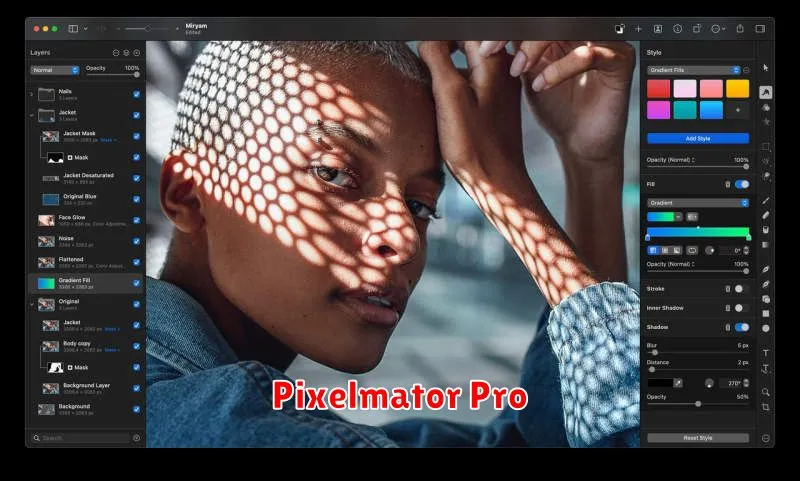
If you’re looking for a powerful and affordable photo editing tool for your Mac, Pixelmator Pro is a great option. It offers a wide range of features, including layer support, vector editing, painting tools, and photo retouching. Pixelmator Pro is also known for its user-friendly interface and its impressive performance.
Here are a few of the key features of Pixelmator Pro:
- Powerful photo editing tools: Pixelmator Pro includes a wide range of tools for editing photos, including tools for adjusting color, brightness, contrast, and more.
- Vector editing: You can create and edit vector graphics in Pixelmator Pro, making it a great tool for creating logos, illustrations, and other graphics.
- Painting tools: Pixelmator Pro includes a variety of painting tools, including brushes, pencils, and more. You can use these tools to create digital art, illustrations, or even retouch photos.
- User-friendly interface: Pixelmator Pro has a clean and intuitive interface, making it easy to use for both beginners and experienced users.
- Fast performance: Pixelmator Pro is optimized for performance, making it a great choice for users who need to edit photos quickly.
Pixelmator Pro is a great alternative to Adobe Photoshop, and it’s a great option for users who are looking for a powerful and affordable photo editing tool. You can try it out for free by downloading a trial from the Mac App Store.
Inkscape
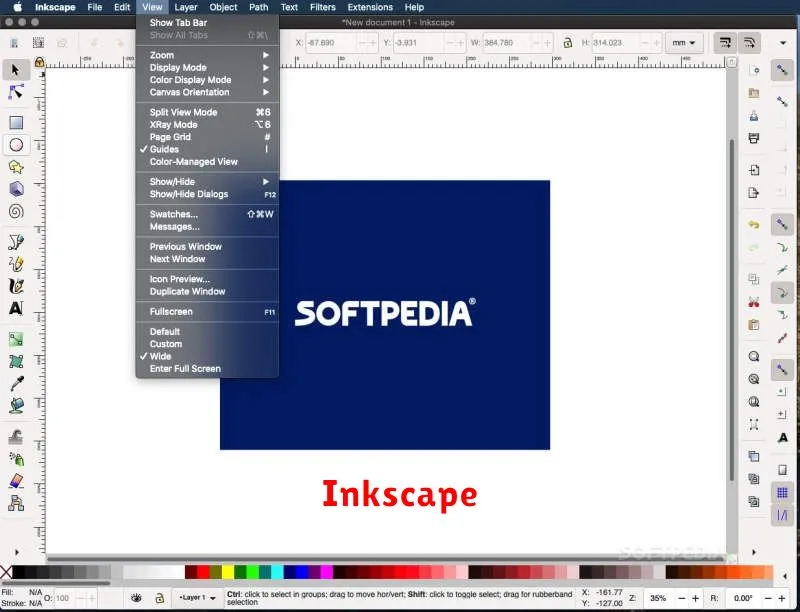
If you’re looking for a powerful and versatile vector graphics editor for macOS that’s also completely free, look no further than Inkscape. It’s a robust alternative to Adobe Illustrator, offering a wide range of features for creating professional-quality graphics.
Inkscape’s strengths lie in its comprehensive toolset for vector editing, including:
- Drawing and editing paths
- Creating and manipulating shapes
- Working with text and typography
- Adding effects and filters
- Exporting in various formats, including SVG, PNG, JPG, and PDF.
Its open-source nature means you can contribute to its development and benefit from a vibrant community of users and developers.
Whether you’re a beginner or a seasoned designer, Inkscape provides a user-friendly interface with extensive documentation and tutorials to help you get started.
CorelDRAW Graphics Suite
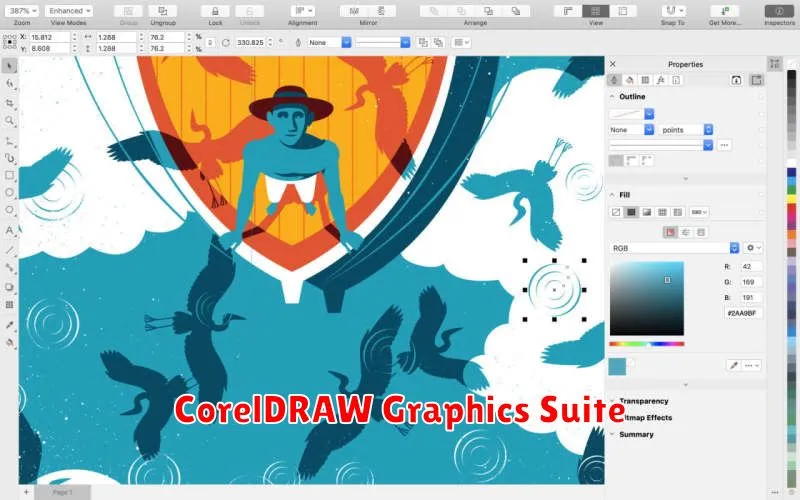
If you’re a graphic designer on a Mac looking for a comprehensive suite of tools, CorelDRAW Graphics Suite is a solid choice. This suite boasts a powerful vector drawing program, CorelDRAW, along with Corel PHOTO-PAINT for image editing, Corel Font Manager for font organization, and a number of other useful tools. You’ll get high-quality vector graphics creation, photo editing capabilities, and a wide range of design assets.
One of the key advantages of CorelDRAW is its intuitive interface, making it relatively easy to learn, even for beginners. The suite also offers professional-grade features like advanced color management, object manipulation, and powerful typography tools.
While it’s a great all-around option, CorelDRAW Graphics Suite might not be the best fit for everyone. If you primarily work with web design or require advanced features like motion graphics or animation, other software options might be more suitable. However, for those who prioritize vector illustration, photo editing, and a user-friendly interface, CorelDRAW Graphics Suite provides a robust and reliable solution.
Figma
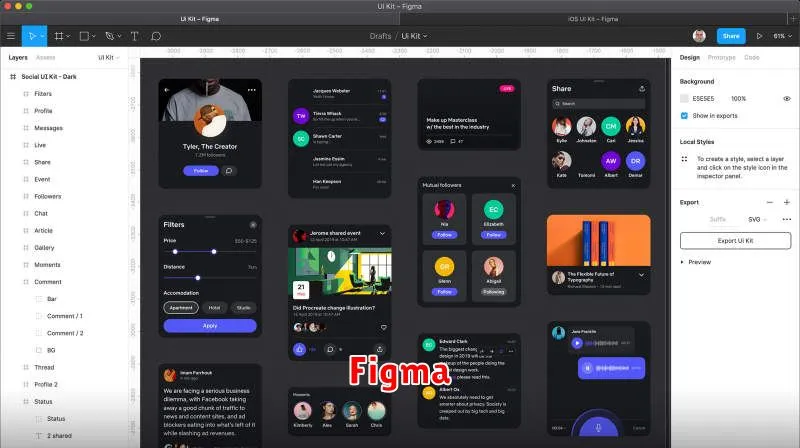
Figma is a web-based vector graphics editor and prototyping tool that’s become a favorite among designers. It allows you to create high-fidelity prototypes and collaborate seamlessly with your team in real-time. Figma’s cloud-based nature makes it accessible from any device, and its intuitive interface makes it easy to learn and use. It’s packed with powerful features, including:
- Vector design tools: Create and edit shapes, lines, and text with precision.
- Prototyping: Design interactive prototypes with transitions, animations, and microinteractions.
- Collaboration: Work on projects simultaneously with your team, see each other’s changes in real-time, and leave comments.
- Plugins and integrations: Extend Figma’s functionality with a vast library of plugins and integrations.
Figma is a powerful and versatile design tool that’s perfect for designing websites, mobile apps, and UI elements. It’s a great choice for both individual designers and design teams.
Adobe InDesign
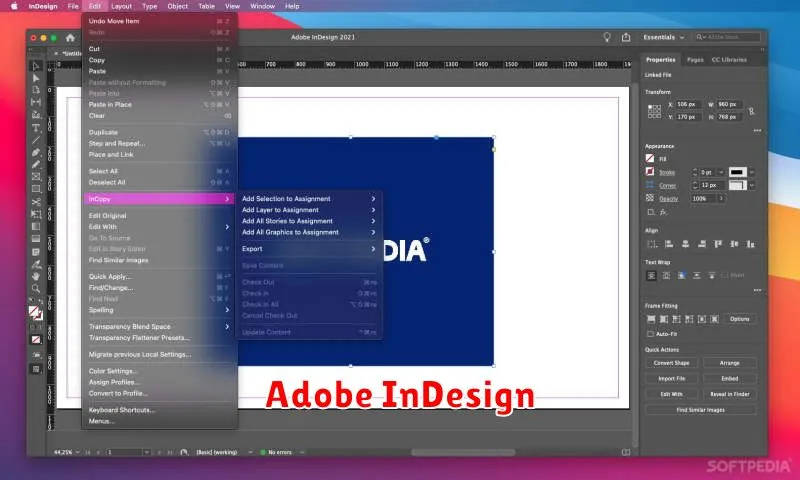
Adobe InDesign is a powerful desktop publishing software that is essential for any graphic designer. It allows you to create professional-looking layouts for magazines, brochures, books, and other printed materials. Some of the key features of InDesign include:
- Master Pages: Create templates for your documents that can be applied to multiple pages.
- Text and Image Layout: Easily place and manipulate text and images to create stunning layouts.
- Color Management: Ensure your colors are consistent across all devices.
- Advanced Typography: Control every aspect of your typography, including fonts, spacing, and leading.
- Interactive Features: Add interactive elements like buttons and hyperlinks to your documents.
InDesign is a complex software, but it’s worth learning if you want to create high-quality printed materials. There are many resources available online and in libraries to help you learn InDesign.

